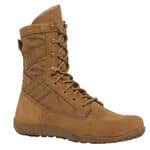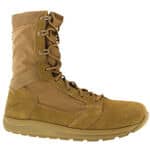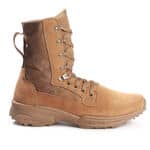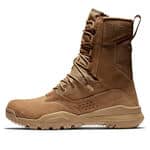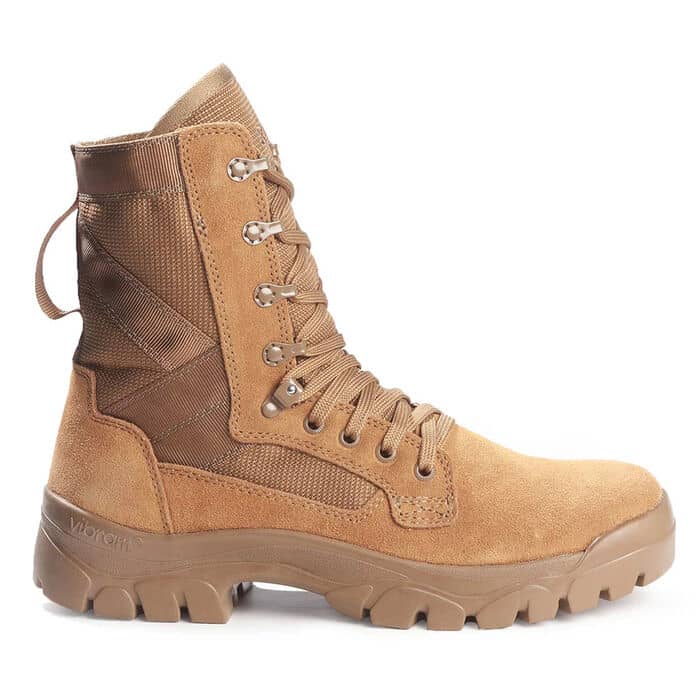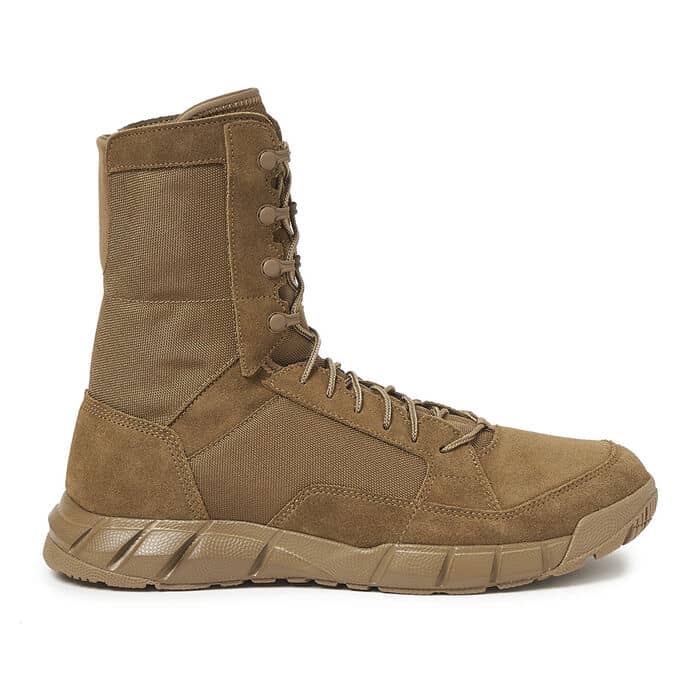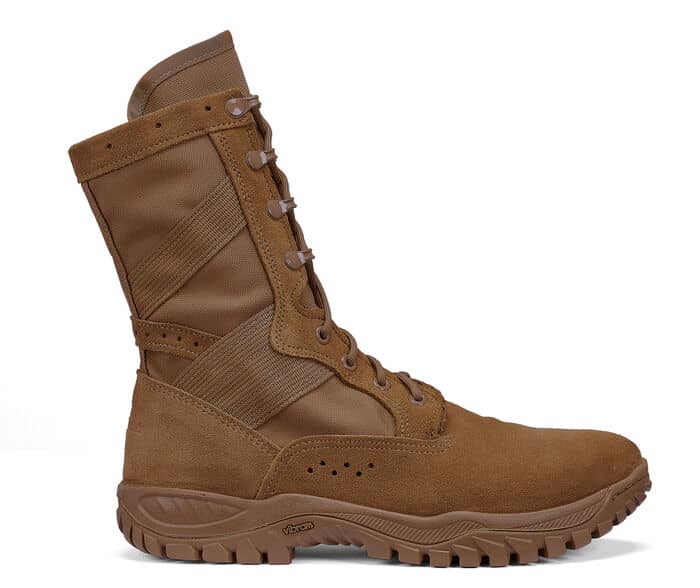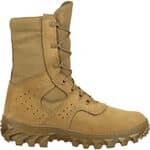RUCK BOOTS GUIDE
WHAT IS "RUCKING"?
Rucking is a form of cardio that is used in both civilian and military physical training. It's a lot like walking, but with the addition of a heavy pack that works the upper body along with the lower body. Like walking, rucking is for everyone. All you need to start rucking is a comfortable vest or backpack, supportive footwear, and a positive attitude!
Rucking simultaneously works the legs, back, core, and trap muscles. Apart from building muscle, rucking has many benefits, including weight maintenance and improving cardiovascular fitness. It can also help improve mood, memory, and sleep.
Is rucking a good workout?
Rucking is a great workout because it's accessible to everyone. However, it's important to respect your limits when learning to ruck. Overloading your pack is a good way to get yourself hurt, and new ruckers should always start low and slow, adding only 5-10 lbs to the pack every 3-5 weeks.
Like any other workout, learning to foot ruck is a process. You learn to walk before you run and learn to run before you ruck. When you're on a long ruck, the last thing you want to happen is for your knees or ankles to buckle, so make sure you have a solid running foundation before you get started. You'll also want to boost your lower and upper body strength with a well-rounded weightlifting regimen.
Finally, remember that rucking sucks big time, but high-quality gear and a good pair of rucking boots can help you stay on your feet when the going gets tough. Read more about how to choose the best ruck boots below.
What does "ruck" mean in the military?
The civilian ruck and military ruck share similar health benefits, such as raising your heart rate and building muscle, but a military ruck is different from a civilian ruck in one critical way:
While the purpose of a civilian ruck is to improve overall health, military ruck marches are intended to condition soldiers to cover a lot of ground while carrying everything they need to survive on their backs. While Crossfitters are highly motivated to succeed, a soldier's life literally depends on learning this vital skill.
Army Ruck March Standards
When people hear the phrase "ruck march," they often think of the US Army basic training program intended to whip recruits into shape. This program includes three phases (red, white, and blue) spread out over ten weeks.
Recruits begin intense physical training in the red phase and complete the Army Combat Fitness Test (ACFT) before progressing to phase 2. ACFT requirements include maxed-out deadlifts, standing power throw, hand-release push- ups, sprint-drag-carry, leg tucks/planks, and a 2-mile run. By the time a cadet completes the ACFT, they will be more than prepared to ruck with the best of 'em.
The 12-mile ruck is a hallmark of Army basic training and rounds-out blue phase. Recruits who complete the ruck requirement receive the Expert Infantry Badge (EIB). Rucking requires recruits to carry a heavy backpack containing one of three different combat loads: Fighting Load, Approach March Load, or Emergency Approach Load. The type of load carried will be designated by the commander.
It's commonly thought that a rucksack must weigh at least 45 pounds, but this isn't the case. The purpose of the "hump" is to teach recruits how to successfully move themselves and their equipment to a certain destination within a set timeframe and be combat-ready upon arrival. Loading recruits down with too much weight works against this purpose. It's the commander's job to assess each situation and optimize soldier load to avoid overtiring and injury.
That said, carrying a heavy backpack is all part of it, so you might as well embrace the suck and get it done. Fighting Loads should be 30% of a soldier's body weight (60-80 pounds), Approach March Loads should be 45% percent (80- 100 pounds), and Emergency Approach Loads should be 100-125 pounds. Refer to US Army Foot March Publication for more info.
Do I need boots for rucking?
Every athlete or soldier knows that wearing supportive, comfortable footwear while rucking is of the utmost importance. However, the type of footwear you choose depends on your situation. An athlete who has just started rucking short distances can get by with a pair of running shoes or sturdy hiking boots. However, serious ruckers and soldiers require a good pair of boots engineered specifically to help them cover a lot of ground in a short amount of time.
What makes a good ruck boot?
In our opinion, the best boots for rucking have uppers made from lightweight materials, such as abrasion-resistant leather and breathable nylon, that can stand up to hours of movement. The outsole of a good rucking boot should be flexible and have deep lugs that can grip various types of terrain. If your planned ruck will take you into rocky territory, consider choosing a boot with a heel counter or toe overlay for enhanced stability.
Ruck boots should fit snuggly around the ankle, heel, and mid-foot without restricting movement. The toe box should be roomy to splay the toes fully. The best boots to ruck in have lightweight fiberglass shanks and cushioned insoles that cradle the foot to provide exceptional shock absorption. Waterproof boots with a GORE-TEX membrane will keep your feet dry and healthy when rucking in wet weather.
Lastly, Army rucking boots must be AR 670-1 compliant and authorized for wear with MultiCam® and OCP uniforms. Always check the Wear and Appearance of Army Uniforms and Insignia publication before buying Army ruck boots.
Best Military Boots for Rucking
US Patriot Tactical takes pride in offering a large selection of ruck march boots so you can reach your full potential. We know that, with so many options, choosing the right Army rucking boots can be frustrating. That's why we've put together a list of the best boots to ruck in from top tactical boot brands, such as Belleville Boots, Danner, Garmont, Nike, Oakley, and Rocky.

